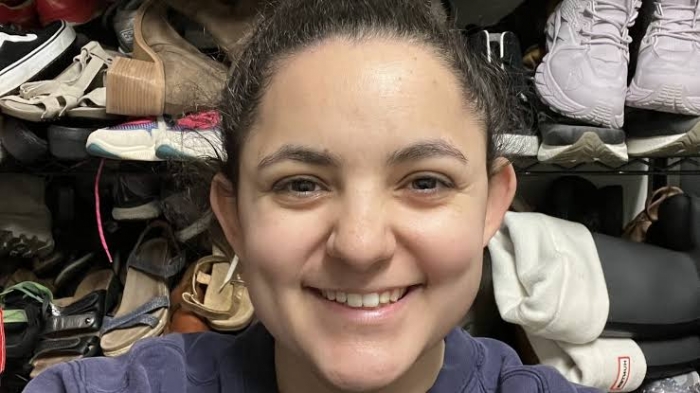Technically, Sophie Riegel didn’t spend a penny starting her side hustle.
She began with items she already had, searching through her closet for old clothing to sell online. After making $200 off her own used clothes, she turned to some of her favorite places to shop: thrift stores.
“I’ve been a thrifter my entire life, because I don’t like spending money,” says Riegel, 23. “I’d much rather spend $5 than $100 on a pair of pants.”
Since April 2020, she’s turned that habit into a lucrative side hustle. Riegel brought in nearly $123,800 in revenue last year reselling items she bought from thrift stores on online marketplaces like eBay, Mercari and Poshmark, according to documents reviewed by CNBC Make It.
She’s made more than $192,000 in net profit over the past four years, because her costs are minimal: Riegel estimates she’s spent just over $50,000 on the thrifted clothing she’s sold. Other expenses include shipping costs and gas money for driving from thrift store to thrift store. Online marketplaces keep between 10% and 20% of her sales.
Much of her business’ growth came from her dorm room at Duke University, where she graduated last year with a degree in psychology. She’s pursuing a full-time career as a professional writer, speaker and life coach — and expects her side hustle to comprise roughly 50% of her income this year, she says.
“I started buying things for $5 to $10, flipping them for $50 to $100,” says Riegel. “That seemed to work really well. I had maybe 200 or so items in my dorm room my sophomore year, and now I have 1,300 items [in a storage unit].”
Here, Riegel discusses the work she put in to turn her love of thrifting into a six-figure annual business, along with tips for anyone else to follow in her footsteps.
Riegel: The biggest thing is you’ve got to have fun with it. If you’re not enjoying it, don’t do it.
Start with what you know the most about. If you know a lot about clothing, start with that. It can be really easy to just buy a lot — that’s the fun part — but it doesn’t sell if you don’t list it. So even if your listing is imperfect, get it up, get it out there, because there’s a market for everything.
Keep learning. If you go in with a mindset of “I already know this stuff, I don’t need any resources,” it’s likely that you won’t do as well as if you went in with the mindset of “This is a great opportunity for me to learn more about myself, about brands, and all of that.”
I followed tons and tons and tons of other resellers on YouTube. I spent hours and hours learning brands, learning how to use all of the platforms. I’ve learned the strategies of each of the stores I go to, and figured out when they put out the new shoes when they do X, Y and Z.
The Goodwills in my area put a new color out every week. So, when I go to those stores, I only look for that color.
How much cash do you need to start a thrifting side hustle?
Factoring in shipping and all of that stuff — obviously, you need to pay for gas — $100 makes sense.
[In terms of the thrifting], you can start with as little as $5. You get one good thing for $5 and you’ve got more money already: $5 turns into $20, turns into $100.
If you start with your own stuff, you need $0.
What are the most important traits someone needs to succeed at this?
You’ve got to be consistent and persistent. Right now, I list 10 to 20 items a day. And because I list every day, things are selling constantly.
You’ve got to be organized. You have to be patient — I’m not very good at that, but I’m working on it.
The biggest thing is: You’ve got to be willing to ask for help when you need it. You don’t have to do this all alone. When I first started, my dad helped me with all of my shipping. He helped me move everything from different storage units. I didn’t have to do it alone because I asked for help.
Do you see yourself expanding your side hustle in the future? What would that look like?
I’m pretty happy with where I am. I do see, in the future, potentially having employees do all of the stuff that I know I don’t want to do — like the shipping, listing and photographing. That would be great. It is a lot of work for one person.
But right now, I wouldn’t change it because I love what I do.
CNBC


































































